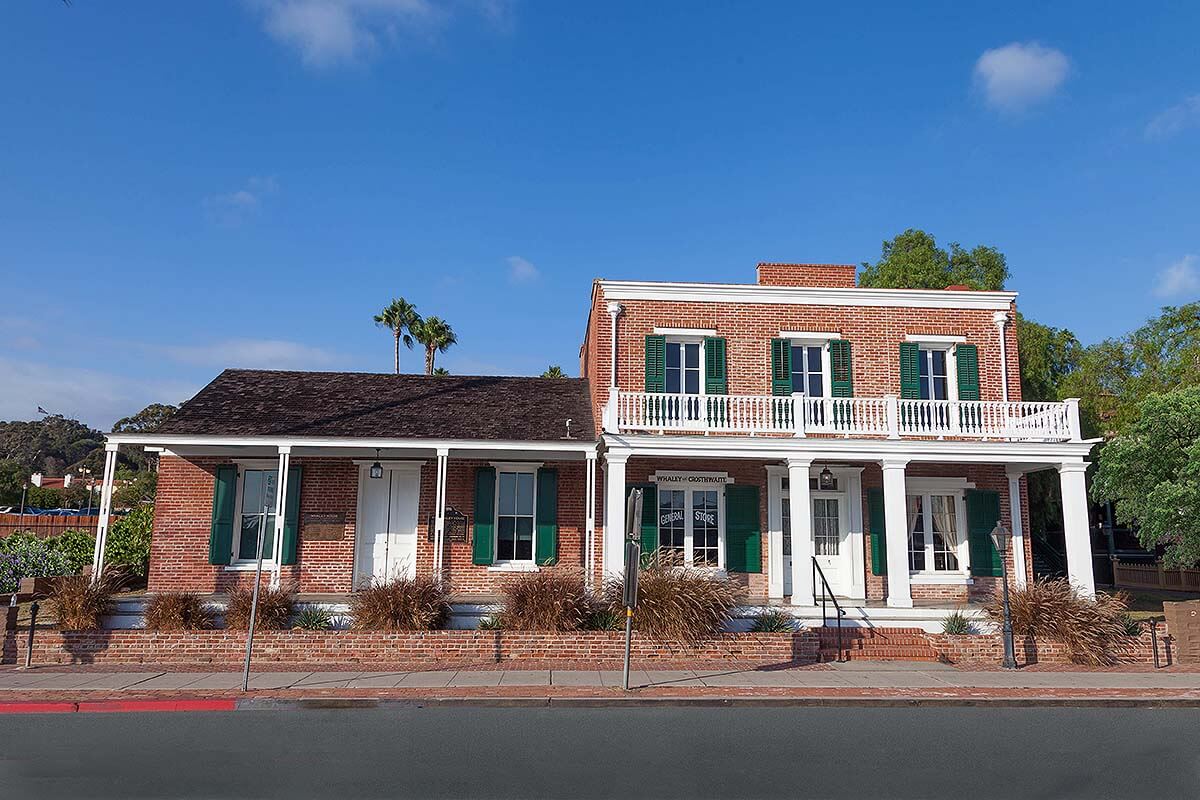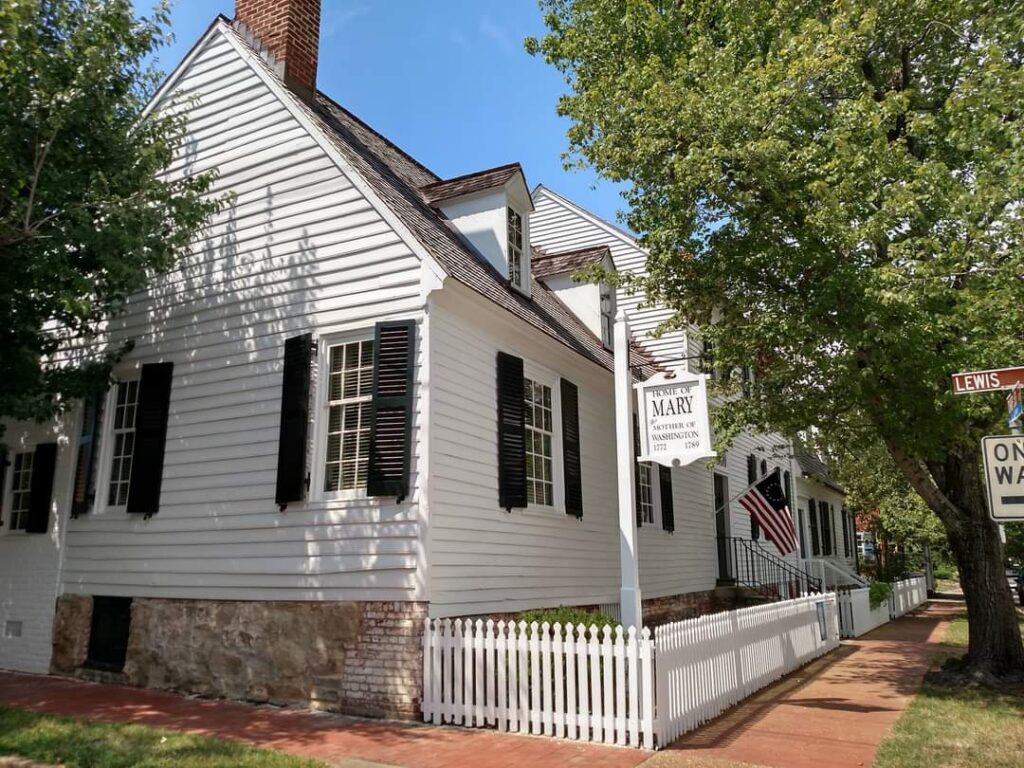Is it haunted?
A few days ago, during a telehealth appointment my psychiatrist asked me what I did for a living. The question did not take me by surprise as I was a new patient as my previous psychiatrist had left the practice and the main purpose of this appointment was for her to get to know me and my needs to best establish future care. I promptly answered that I was the manager of the Mary Washington House a local historic site in Fredericksburg, Virginia. She was not familiar with the site and asked a few more questions. I told her that the house was the residence of Mary Washington, the mother of George Washington. All well and good, but the next question took me completely off guard.
“Is the house haunted?”
I must admit, the question took me off guard. Since I was a teenager, I have had anxiety and depression. Though by this point in my life, I have reached a place of acceptance of my condition. I also have reached out and has received help through medication and treatment for almost two decades.
But there are also things that you don’t share with a person when you first meet them—your mental health conditions and, in most social situations, that your place of work may be haunted.
Well here goes nothing, I thought.
“Yes, it is,” I answered.
“Cool! Does anything spooky happen?”
I told her that while occasionally things happen that are of a spooky nature, the paranormal activity is more humorous in nature than scary. She then told me that her sister had told her about a paranormal tour that the Mary Washington House had put on last year and that she was curious about the site.
The appointment wrapped up a few minutes later and after signing off I had a good laugh as that was not the type of question I had anticipated going into the appointment. Later while reflecting on what had occurred, I realized that most people are genuinely curious about paranormal activity and what it is really like to work at a site that is haunted.
Despite the proliferation of paranormal TV shows that have flooded the airways since the early 2000’s a lot of misconceptions persist about paranormal activity and what it is like to live or work at places that are labeled as haunted.
Research is key

I have worked in museums since I was fifteen years old and have a master’s degree in history. As a trained historian, I have always tried to follow the facts, in my case what can be proven by the historic record, to reach a conclusion about what happened in the past. That is not as easy as it seems. For instance, while a major historical figure like George Washington has left an abundance of records to document his life, that is not always the case for those who came before us.
Researching the lives of those who left few records like Mary Washington and the men, women, and children of African and African descent who were enslaved is a much more difficult task. Because there are fewer primary documents, I must cast my net farther abroad, looking into the general lives and experiences of those who led similar lives. While at times, the task can be frustrating as every new revelation leads to a host of new questions, some of which we will never be able to fully answer. But for all the frustrations, the moment when I can make a connection or find a reference to the individuals that I am researching is euphoric.
I take my craft serious, and I am fully aware that my research shapes how the public views the lives of the people who once called the place that is a museum home. When I started at my first museum, the Whaley House in Old Town San Diego, known as the most haunted house in America, my mother reminded me that the people who are believed to haunt the site where real people and not a commercial creation. If I could not treat them with respect than working in a museum would not be a good fit for me. I took her advice to heart, and it has shaped my interpretation of the past ever since.
While working at the Whaley House, I researched the historic record to prove or disprove the basis of the colorful legends that were told about the site and the Whaley family. When guests asked about the ghosts, I was able to give them the history of the Whaley family and why that may have led to the haunting. I then wrapped up my presentation with a few ghost stories of spooky things that happened to me or my coworkers. Which leads to my main point—working at a haunted site is not what TV and Hollywood portrays.
TV versus Reality
Turn on any episode of Kindred Spirits or Ghost Hunters that is filmed at a museum and they all have one thing in common. At some point in the first five minutes, one of the hosts will declare that they were asked to investigate the museum because the management is concerned that the staff are too terrified to work at site and are scared that they are going to get hurt. In my nearly twenty-five years of working in museums, I have never had coworkers or staff that were too terrified to work in a haunted museum.
Yes, spooky things have happened to me, and at the initial moment the event has made me jump. Once during a Halloween program at the Whale House, I had a ghost whisper loudly in my ear. I felt a breath in my ear and the people who I were taking too saw the ribbons in my hair move. At the initial moment it scared the hell out of me, and I jumped and screamed. But after I collected myself, I started laughing as it felt like I had been pranked by the ghost and that no harm was intended. That was the most dramatic moment I have experienced working in a haunted museum, but it did not send me screaming out of the museum vowing to never return.
In fact, most activity is rather tame and mundane. At the Mary Washington House, the activity I have experienced the most is knocks on the door and the occasional tap of footsteps. When I go to investigate and can find no earthly explanation, I usually tell the spirit to knock it off as I have work to do.
Is that a ghost…or just the pipes?
House museums are in old buildings. Which means that I hear a lot of pops and bangs all day long. I know the sounds that the Mary Washington House makes and can tell the difference between the natural swelling and contracting that the wood makes is a humid environment versus something that I cannot easily debunk. I can’t run out of the Mary Washington House screaming every time I hear a pop. If I did, I would soon be out of a job.
I was once on a radio show talking about my book Civil War Ghosts and the host asked me about working in a haunted museum. When I told him that it was not scary and that I took it all in stride as part of my job, the host declared that he found my answers to be creepy and that I was being slightly lackadaisical about it. I reminded him that I had worked very hard to become an historian and that I was not going to ruin my standing in the historical community by declaring that every pop the house makes is from a ghost.
When two worlds collide
I generally try to separate my two worlds of being an historian and being a paranormal writer. Though sometimes the two worlds have merged. A couple of years ago I had opened the Mary Washington House for a visiting historian who was writing a scholarly article for a journal about the Mary Washington Monument. She was visiting from out of the area and was only able to visit the site on a day the museum was typically closed. I gave her a tour and opened the museum’s archive for her. She was extremely gracious and because I had granted her access on a day that the site was closed, she offered to take me lunch.
While collecting my purse and cell phone, I received a call from a podcaster who wanted to interview me. I talked with the podcaster, and we set up the interview and I told her I would email her later in the day when I was home as I was currently at work. After hanging up, the visiting historian enquired on my phone call as she had overheard my conversation. Like my conversation with my psychiatrist, I took a risk and told her that along with being an historian I also wrote about ghosts. I expected to be chided with a patronizing look and the typical “you don’t really believe in that stuff” comment. Much to my surprise she was fascinated by the work in the paranormal that I had done and asked about my research and if the Mary Washington House was haunted.
Real life Haunted Mansion?
:max_bytes(150000):strip_icc()/New-Orleans-Square1-haunted-56a386e33df78cf7727ddc98.jpg)
Another misconception is that if a place is haunted it is like working in a real-life version of The Haunted Mansion ride from the Disney parks. As I have already mentioned, the activity that I have experienced is mundane and rather low-key. Also, it can be several weeks before something unexplained happens. Though there are periods when activity is more likely to occur. At the Mary Washington House activity occurs frequently around Christmas and when large groups of school children visit the museum.
Working in a museum, can be dangerous—but not from an attack by a ghost. Dangerous stairs, uneven floorboards, and rusty nails present daily hazards. I once poked myself in the eye with the laces of my stays—fortunately it did not require an accident report. But none of these injuries were caused by a ghost.
Support your local museum
Though all of this is not to say that working at a museum that is believed to haunted is not fun. It’s highly entertaining as it can create some unique museum programs. At the Whaley House the staff looked forward to the annual Halloween program. Ghost tours and paranormal investigations provide museums with a way to target an audience that may not be interested in history and offer a revenue stream during uncertain times. Contrary to common belief, most museums and historic sites receive no federal, state, or local funding and rely exclusively on attendance, membership, fundraising, and grants to keep the doors open and the lights on.
I could not imagine working anywhere else and I view it as an honor to tell the story of life of Mary Washington and the enslaved men, women, and children that lived at the property. What attracted me to the museum was this history and that love has not faded.

